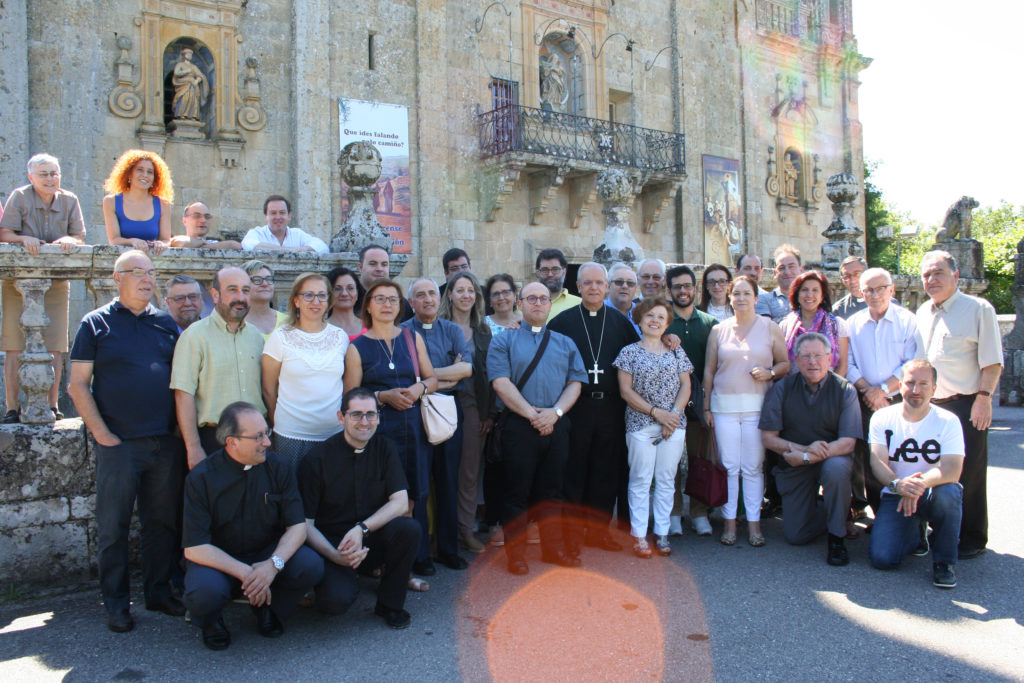As the bishop of Ourense points out in the pastoral letter on the occasion of the opening of the Diocesan Synod, at present, "The entire social fabric that revolved around the family, almost all of which were large families, has undergone a major transformation in both rural and urban areas. The criteria of conduct and values, as well as the educational project, have little or nothing to do with those of previous decades. Christian communities, consecrated life, the exercise of priestly ministry, the very conception of the Church and its structures, and even rural parishes have undergone a profound change. We are all aware that we are living through a change of epoch that is especially evident in the cultural, social and political sphere.". These transformations represent a challenge to which the Church must give a response, which the Diocese of Ourense wants to concretize following the call of the Pope Francis’ to live synodality as a way of the Church.
Once the Synod was convoked, the preparatory phase was carried out for a year and a half, which consisted, above all, in a process of information and sensitization of the entire diocesan community. As a result of this campaign, more than 3,000 people sent to the general secretariat of the Synod proposals for possible topics to be discussed. Taking these suggestions into account, the issues to be addressed were approved and the synodal group phase began. Around 2,200 people, including lay people, religious and priests, are actively participating in these groups, reflecting on the topics presented and making proposals for proclaiming, celebrating and joyfully living the richness of the Christian faith, in fidelity to the Gospel in a specific place and time.
Parish, social action, faith, mission
The first block of topics revolved around the parish, with the aim of starting from its identity and its concrete reality in the diocese of Ourense, and to venture perspectives for the future. The second focused on charitable action and the social presence of the Church. The third dealt with the celebration of faith in the sacraments, the experience of Sunday and popular piety.
Finally, the synodal groups are currently reflecting on the evangelizing mission of the Church based on this observation: in order to renew the evangelizing impulse in Ourense, a process of personal and pastoral conversion is necessary, to recover the joy of salvation and the personal and communitarian experience of the encounter with Christ.
This scenario leads to the need for a first proclamation of the faith, which should be accompanied by the family, the parish and the school. The aim is to be able to mature through a continuous catechesis, both for children, youth and adults, which is aimed at deepening the experience of Christ and not simply transmitting information.
Synodal Assembly in September
On September 21, with the solemn opening celebration in the cathedral, the Synodal Assembly will be inaugurated, in which representatives of the groups and the different sectors of diocesan life will discuss and vote on the final propositions that will be presented to the bishop for implementation.
The Diocese of Ourense, as our bishop points out, hopes that "the concrete programmatic indications approved by the Synod should encourage the proclamation of Christ to all persons living in the diocese, so that their lives may be illuminated by the splendor of faith in Jesus Christ, their existence may be transformed and, through the witness of a coherent Christian life, the values of the Gospel may become an authentic leaven that makes every personal, social, family and cultural structure of our peoples and their people leaven.".
Brief overview of evangelization
In 550 the Swabian king Teodomiro (Karriarico) was converted. As a result of this event, a character enters the scene of the diocese who will have great influence on the evangelization of the lands of southern Galicia: the Hungarian St. Martin of Dumio, who preaches and converts what was a stronghold of the Suevi.
The converted king erects a church in honor of St. Martin of Tours, also Hungarian, who will be the diocesan patron saint and who has, with St. Martin of Dumio, many common data in his birth and in his life. The temple is erected near Santa Maria Madre, built on the remains of eight columns of a pagan temple. The first known bishop is the Swabian Witimir, or Witimiro, who lived around 570 and attended the Council of Bracarense in 572. The 10th century can be catalogued as the Golden Century of the diocese, due to the flourishing of monastic life. The monastery of San Esteban de Ribas de Sil and the Benedictine monastery of Celanova, founded in 937 by the Compostelan bishop San Rosendo, are faithful reflections.
The people of Ourense devote themselves to the patron saint of Ourense, Santa María Madre, in the church that bears her name. It is thought that this place was probably the site of the primitive cathedral of Ourense, which owed its dedication to Saint Martin of Tours.
General Secretary of the Diocesan Synod








